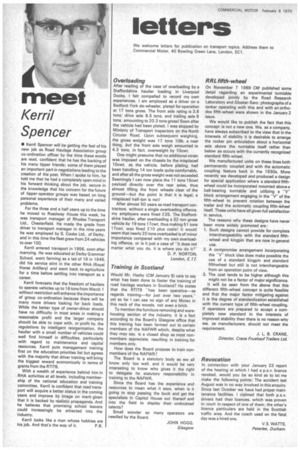Overloading
Page 44

If you've noticed an error in this article please click here to report it so we can fix it.
After reading of the case of overloading by a Staffordshire haulier loading in Liverpool Docks, I felt compelled to record my own experiences. I am employed as a driver on a Bedford-York six-wheeler, plated for operation at 17 tons gross. The front axle rating is 3.8 tons, drive axle 8.5 tons, and trailing axle 8 tons, amounting to 20.3 tons gross! Soon after the vehicle had been plated, I was stopped by Ministry of Transport inspectors on the North Circular Road. Upon subsequent weighing, the gross weight was 17 tons 10Ib, a near thing, but the front axle weigh amounted to 4.3 tons, in fact, overweight by TOcwt.
One might presume that no additional strain was imposed on the chassis by the misplaced 10cwt, as the vehicle, before plating, had been hahdling 14 ton loads quite comfortably, and after all the gross weight was not exceeded. Seemingly I can now place the 11 tons 15cwt payload directly over the rear axles, thus almost lifting the front wheels clear of the ground—but the point is that it is legal, a misplaced half-ton is not!
After almost 50 years as road transport contractors, without a single overloading offence, my employers were fined £35. The Staffordshire haulier, after overloading a 32-ton-gross vehicle by 19 tons 17cwt, thus making 51 tons 17cwt, was fined £10 plus costs! It would seem that nearly 20 tons overloaded is of minor importance compared with my own overloading offence, or is it just a case of "it does not matter what you do, it is where you do it?" D. P. NORTON, London, E.17.


















































































































































